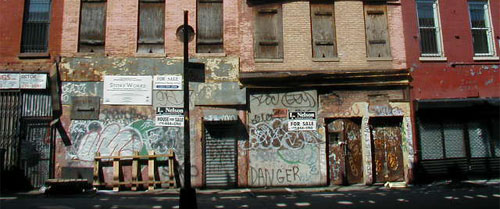This weekend, NYT Magazine had an interesting article (I think I spent most of the weekend reading this real estate issue) on the [noted Harvard economist Edward L. Glaeser [NYT]](http://www.nytimes.com/2006/03/05/magazine/305glaeser.1.html?pagewanted=all). _Unlike that of most other housing economists, Glaeser’s recent work on real estate addresses the issues of supply rather than of demand. He is far more interested in the forces shaping land development and residential building in the United States than in the forces shaping buyers’ motivations and actions._
I think that what I call _economic geography_, such as the layout of a city, its transportation system and its geography has taken a back seat to consumer-based economics, especially during the most recent housing boom.
I first came across the work of Glaeser in [“Why is Manhattan So Expensive? Regulation and the Rise in House Prices” [pdf]](https://millersamuel.com/pdf-tank/1106013654NOEow.pdf). _[I always have a soft spot for any noted economists who cite my firm in their work -ed]_
He is skeptical about arguments citing the lack of land as causing high housing prices and believes that the housing crisis was man-made. Here’s a couple of stat facts:
* 95% of US land is undeveloped.
* if every American were given a house on a quarter acre, so that every family of four had a full acre, that distribution would not use up half the land in Texas.
In other words, its all about zoning and land-use rules.
For example, in Manhattan, 30 years ago, the price of an additional floor was essentially its additional cost. However, over the last 30 years, the average height of a building has actually decreased. _…if prices in Manhattan are skyrocketing, you should be building more and more at 50 stories, rather than at 30. Not the reverse…and estimated that one half or more of the value of condominiums in the borough could be thought of as arising from some type of regulatory constraint preventing the construction of new housing._
I think one of the most interesting aspects of his research came from his work with Joseph Gyourko on the relationship between housing and urban poverty. In markets with poor future economic prospects like Detroit, why doesn’t it experience a much faster outflow of population, especially to other areas of the country that are doing better economically? The conclusion was the _permanence of housing_. In Detroit, the median sales price of a house was $63,600 in 2000 yet the cost to build a new house to replace it would be $80,000. No builder would build new houses because it was not cost effective, so as long as those houses remain standing, the people who seek that price point will remain. This is presented in their paper [Urban Decline and Durable Housing [pdf]](http://www.economics.harvard.edu/faculty/glaeser/papers/Durable_Housing.pdf)


